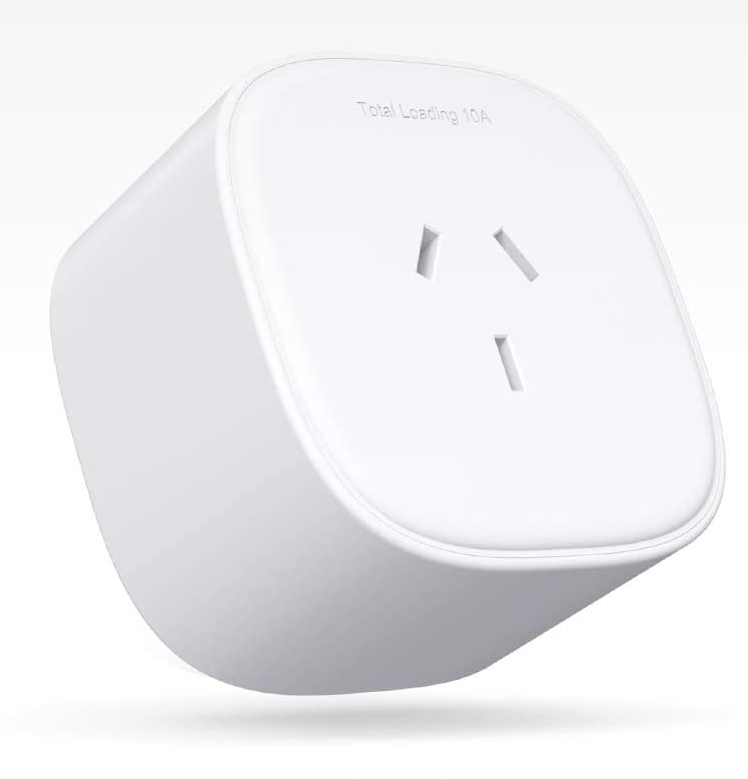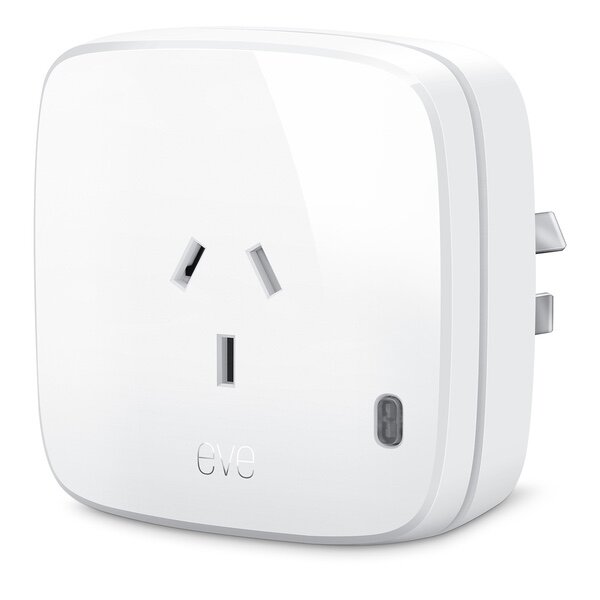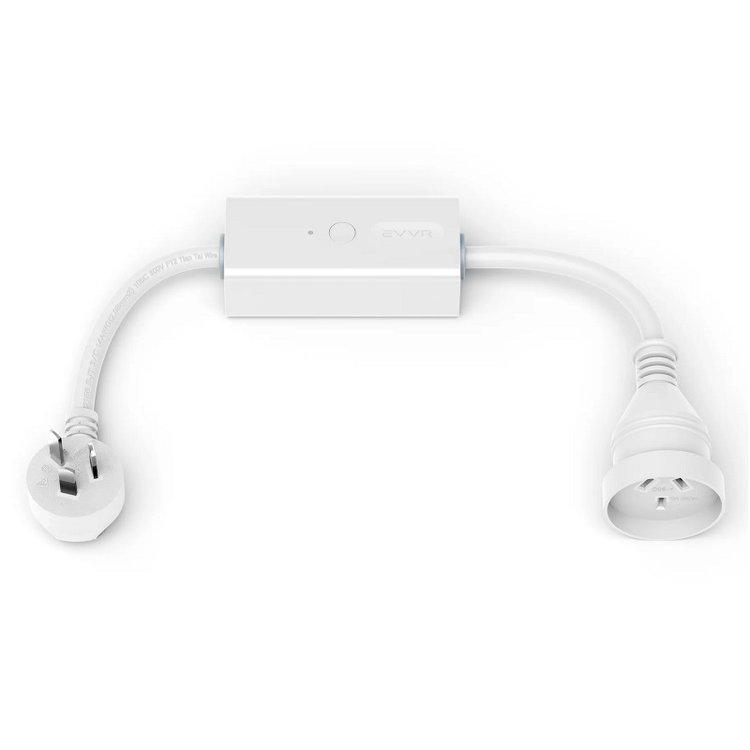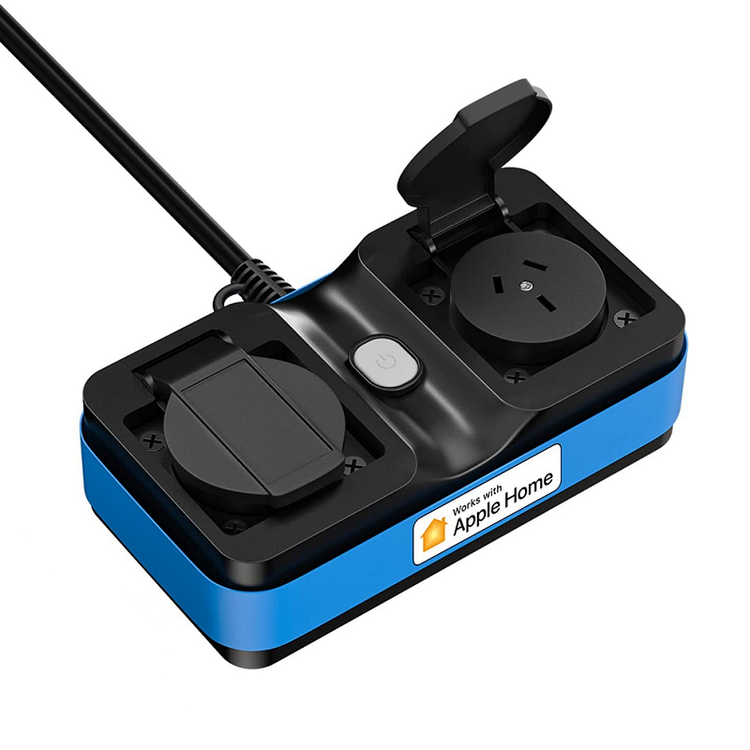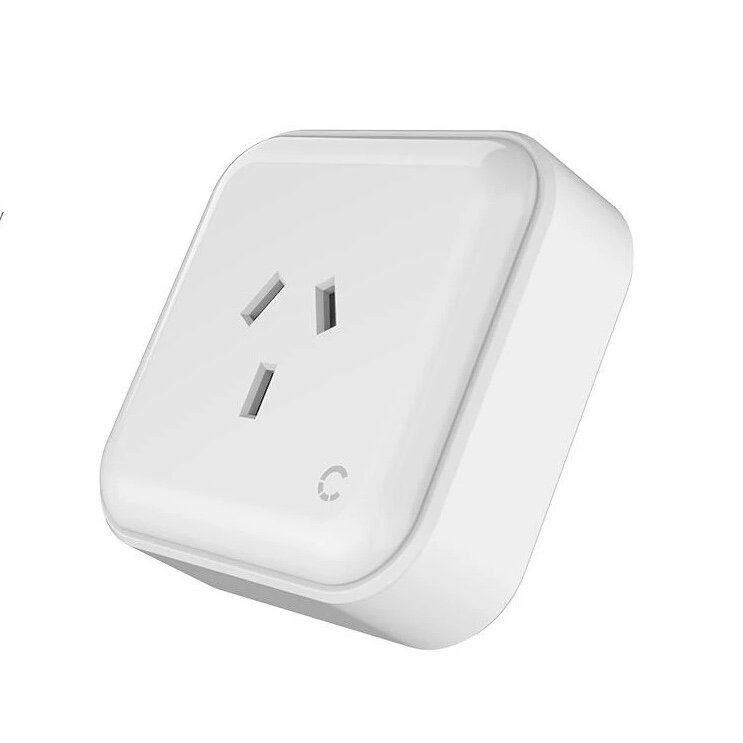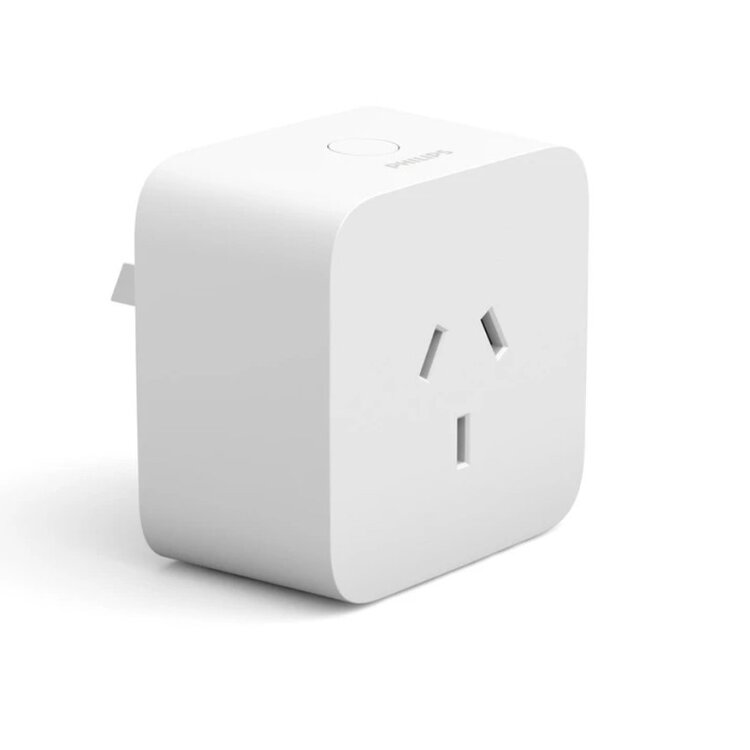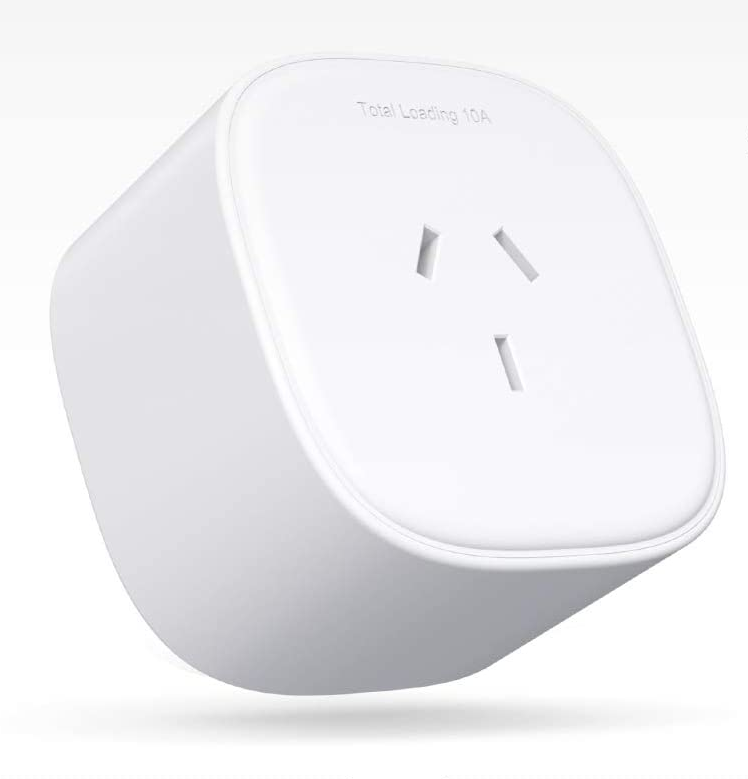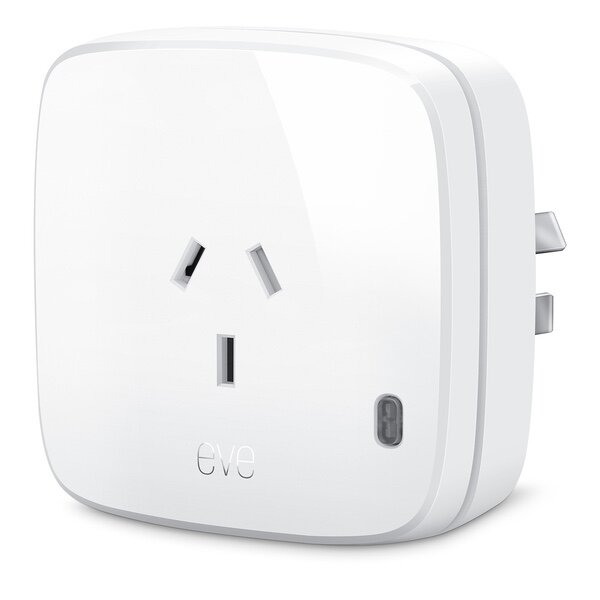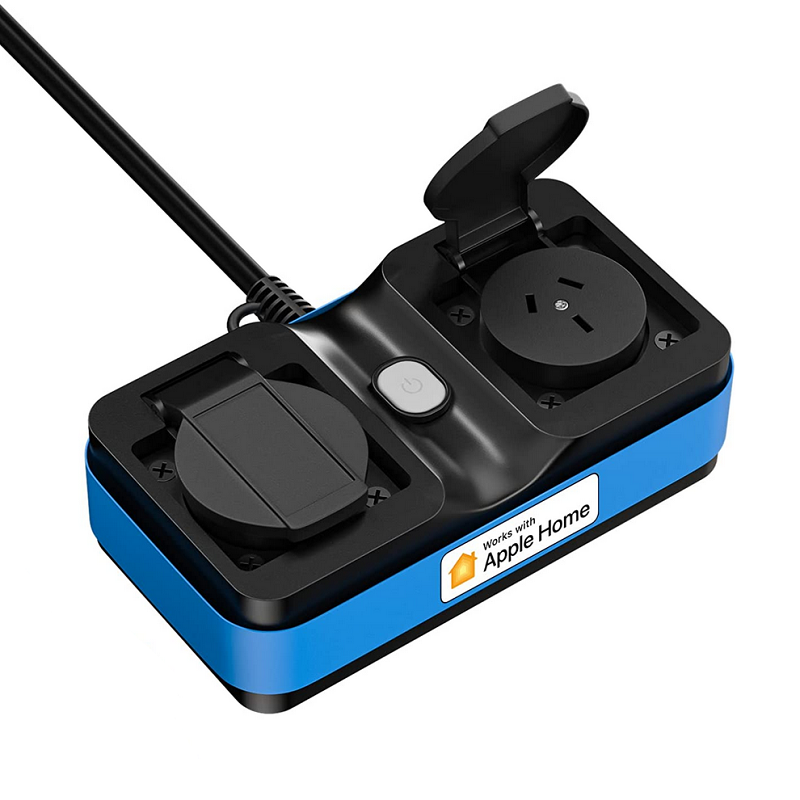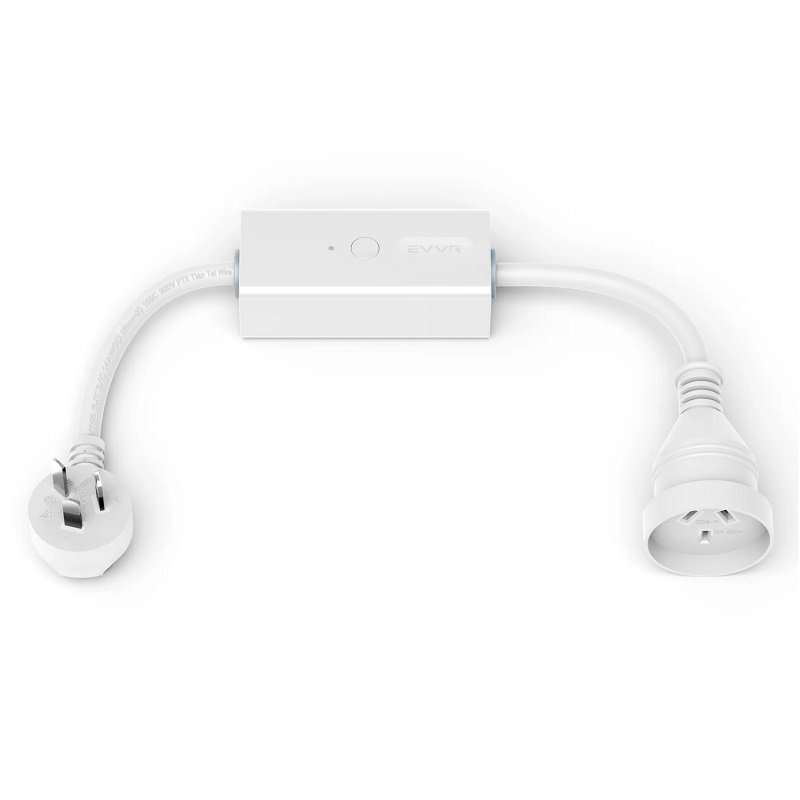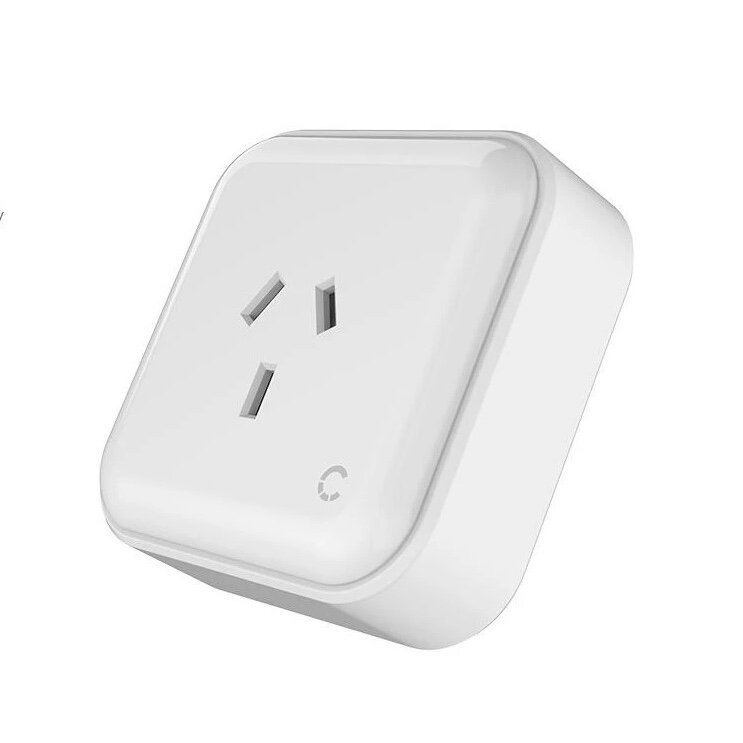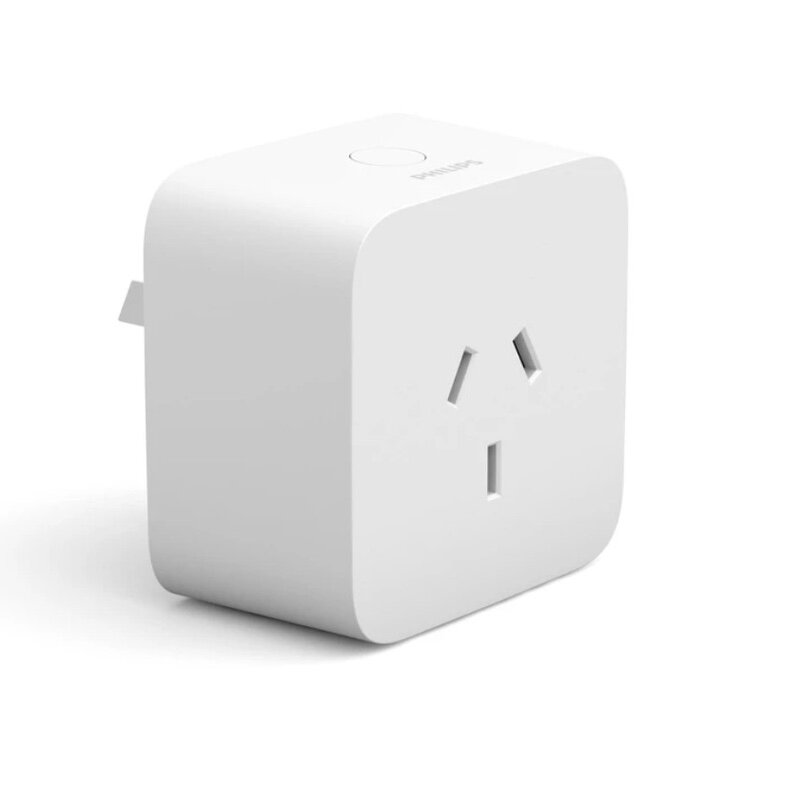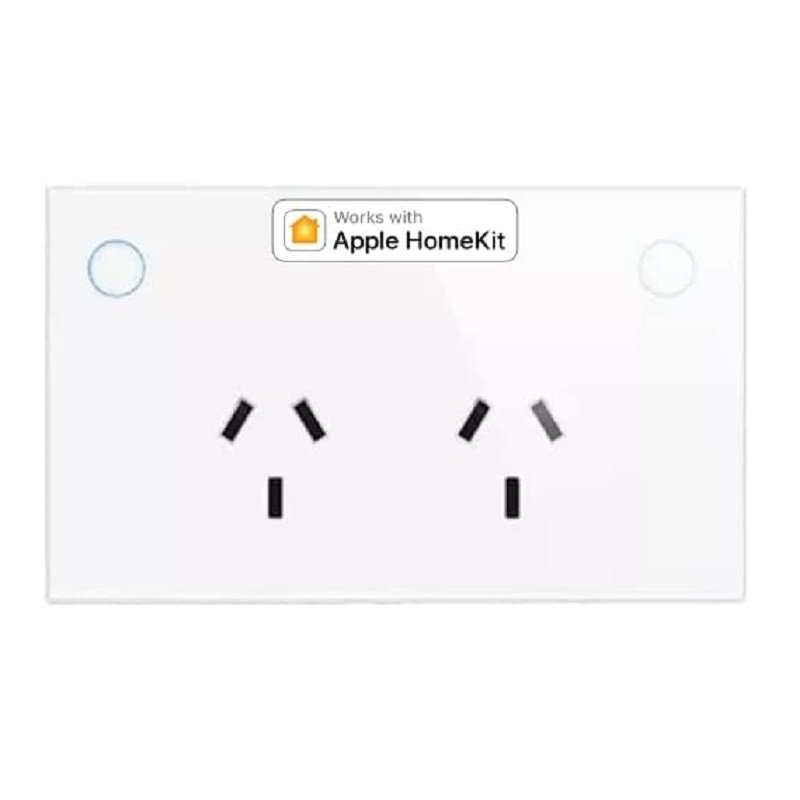All HomeKit Smart Plugs For Australia Compared
When you buy through links in this article, I may earn an affiliate commission. Learn More.
Finding HomeKit accessories in certain categories can be a challenge outside the US. This is generally prevalent where the device requires a mains plug as many manufacturers are focused on the larger US market and it’s 120V supply.
For Australian HomeKit users, the smart plug has been particularly scarce. We’ve basically been stuck with only one option, the Eve Energy, since HomeKit first arrived. Thankfully the last few years have seen the introduction of several good alternatives covering different price ranges and capabilities.
I’ve tried all of these smart plugs myself and have detailed each of them below. I’ve also selected the best option for various use cases. Let’s take a quick look at these devices side-by-side before we jump into the details on each one further down.
Australian HomeKit Smart Plugs Compared
| Connectivity | ||||||
|---|---|---|---|---|---|---|
| Connectivity | Wi-Fi | Thread | Wi-Fi | Wi-Fi | Wi-Fi | BT/ZigBee |
| NFC Pairing | ||||||
| NFC Pairing | ||||||
| Load Rating | ||||||
| Load Rating | 10A | 10A | 10A | 10A | 10A | 10A |
| Adjacent Socket Free | ||||||
| Adjacent Socket Free | ||||||
| Energy Monitoring | ||||||
| Energy Monitoring | ||||||
| Outdoor Rated | ||||||
| Outdoor Rated | ||||||
Best Wi-Fi Only
Meross WiFi Smart Plug
✔ HomeKit, Alexa, Google Assistant, SmartThings
✔ Wi-Fi, no hub required
✔ Easy HomeKit setup
✔ 10A Rated
✔ Comes in 1, 2, or 4 pack
✔ Energy monitoring
✘ Energy monitoring needs third party app
Smart device maker Meross has been going all out adding HomeKit support to a whole bunch of products lately, and we’ve now seen the newest variant of their smart plug line up get it. The Meross WiFi Smart Plug smart plug is available in all major plug formats, including Australia, and you can score multiples in discount bundles through the link above. These are a great deal as a 2 pack will cost not much more than the next cheapest model, the Cygnett.
Be aware that there is another version of the Meross plug available in AU format that DOES NOT support HomeKit, so stick with this one. Previously, the HomeKit model didn’t have energy monitoring functionality, but this new model does through the Meross app. That removes the major strike against the Meross over some other models.
The Meross plugs are a little narrower than the Eve and Cygnett models, but almost 1cm deeper. The design is similar to the Hue plug, but the latter is considerably more compact. You still won’t get another plug side-by-side with this, but it is just slim enough to work with power boards that have the wider spaced sockets for power adapters.
They’re pure Wifi, so no additional equipment required, and they claim to use the same chipset as Amazon’s Echo devices giving them a higher quality signal than some cheap competitors. I’ve been using these without issues for a while now and the performance and reliability has been outstanding.
Best For Energy Monitoring
Eve Energy
✔ Best App Features
✔ Matter via Thread
✔ 10A Rated
✔ Easy HomeKit setup
✔ Energy monitoring data available to HomeKit
✘ Blocks adjacent sockets
Eve Systems has been making HomeKit exclusive accessories since the beginning, and supports international markets quite well, although some of their products have regulatory limitations. The Eve energy was one of the first products they released and supports the largest number of socket types of any smart plug. Thankfully, one of these is the Australian Type I standard 10 Amp socket.
Note that the earlier model of the Eve Energy was limited to 8 Amps, but this new Matter version is rated at 10 Amps like the other available options.
As with most Eve accessories, the Eve Energy communicates via Bluetooth using Eve Systems purpose-built HomeKit Bluetooth implementation. This ensures it has comparatively excellent range and generally responds very well to commands. It’s still Bluetooth though, so if you’re using that it won’t be as responsive as other models. You don’t have to, however, as the new model Eve Energy also supports Thread, the new low power mesh networking standard being adopted by the smart device industry.
To use Thread, you’ll need a new model Apple TV 4K or a HomePod Mini. The Eve Energy will use this is it’s available, so you don’t have to configure anything. Once connected you’ll get super-fast response times and high reliability thanks to Thread’s mesh redundancy. They’re still running out old stock, so look for model number 20ECF6001 for the Thread enabled version.
The energy monitoring functionality in this device supports native HomeKit attributes and can be accessed through various third-party HomeKit client apps, including Eve’s own. The Apple Home app, however, doesn’t have any way to display this data. If monitoring is your priority, then the Eve app provides the best logging and display of that data out of all of these models and accessing it for HomeKit automations is a great bonus.
While the plug works very well and has been rock solid reliable for me even in fairly extreme situations, it does suffer from its size. Being a square form factor it does tend to obstruct neighboring sockets more than other models.
Best Outdoor Smart Plug
Meross Smart Plug Outdoor
✔ HomeKit, Alexa, Google Assistant, SmartThings
✔ Wi-Fi, no hub required
✔ Easy HomeKit setup
✔ 10A rated
✔ 2 grounded sockets
✘ No energy monitoring
✘ Flimsy mounting hole
For years I have wanted an outdoor smart plug compatible with HomeKit and watched on with frustration and the US and Europe received plenty of options. Finally, Meross has come to the rescue with their new outdoor plug, compatible with HomeKit, Alexa, Google Assistant, and SmartThings.
It’s basically the same spec as their indoor plug above, but with an IP44 outdoor rating and two 10A sockets. That makes it splash resistant, and with the covers closed, dust resistant as well. Thankfully the two sockets are spaced well apart to allow for larger plugs without obstruction, and they’ve included a single on/off button that powers both sockets. Control of the individual sockets is achieved via the Meross app or HomeKit.
It plugs into an outdoor wall socket via a ~900mm lead cable, the base of which also provides the only mounting hole. This is a small, off-center plastic ring which seems a bit flimsy. I expect this won’t hold up very well once it’s been in the sun for a season or two.
As with the indoor plug, setting up on HomeKit doesn’t require the use of the Meross app. For the privacy conscious, you can pair it with the Home app by scanning the QR code and have that perform the Wi-Fi connection for you. Note you will still need the Meross app for any firmware updates, though.
Best For Tight Spaces
EVVR Smart Plug
✔ HomeKit, Home Assistant
✔ Wi-Fi, no hub required
✔ Easy HomeKit setup
✔ 10A Rated
✔ Energy monitoring
✘ Energy monitoring needs third party app
This new product from smart home brand EVVR takes a different approach that completely removes any concern over blocking adjacent sockets or, as in my case, built-in USB ports. By using a short tail on both ends of the device the wall plug is not impeded at all, and the 90-degree, low profile plug also ensures it doesn’t protrude as far from the wall as other smart plugs do.
The need to position the device out of the way is not as big a concern as you might think as it essentially sits in-line with the cord to whatever you have plugged into it anyway. I’ve run into enough situations where getting a smart plug into the socket or power board has been impossible without using a short extension cord, so this design provides a much more elegant solution in those cases.
The device pairs quickly and easily with HomeKit, and once up and running responds quickly and reliably. Energy monitoring is available through EVVRs own app, which is basically just a HomeKit client with the extra functions added in for viewing the data and adjusting a few default behaviors on the device.
With Belkin seeming to have pulled their Australian model Thread smart plug, this new option fills the need for those with crowded power outlets, and actually performs better in my experience. It’s only available for pre-order at this stage but should be shipping soon.
Best Value
Cygnett Smart
✔ Most Affordable
✔ Wi-Fi, no hub required
✔ Easy HomeKit setup
✔ Allows adjacent socket use
✔ 10A Rated
✘ Energy monitoring needs third party app
You may be familiar with the name Cygnett, they’ve been makers of mobile phone accessories for some time and can be seen prominently on the racks of stores like JB Hi-Fi and Big W. They also have a new range of smart home products tailored for the Australian/New Zealand market that support Apple’s HomeKit as well as Google Assistant and Amazon Alexa.
The Cygnett Smart Wi-Fi Plug in this range is similar to the Eve Energy in appearance, but uses Wi-Fi instead of Bluetooth, which means it works directly with HomeKit without a hub.
While it supports direct control through Cygnett’s own app and account, there have been a lot of complaints about the app not working well. Thankfully, it’s not required to get it working with HomeKit, just scan the QR code in the Apple Home app and it’ll be automatically added to your Wi-Fi network and be ready to use with Siri.
The plug itself sports an off-center design in an effort to prevent obstructing an adjacent socket. This does work to an extent, but it’s still tight and anything wider than a basic plug is going to struggle. It could afford to lose another 5mm or so off the outer edge.
In my testing performance in HomeKit has been excellent 99% of the time. It’s pretty much instant when command via Siri or the app, only once has there been a slight delay of a couple of seconds.
While the plug does come with an energy monitoring feature, as with other smart plugs you’ll need to use the Cygnett app to access that as it’s not natively exposed to HomeKit. Even so, this feature couple with its off-center design and low price make this my best value pick.
A Good Option for Philips Hue Users
Hue Smart Plug
✔ Compact Profile
✔ Bluetooth or reliable ZigBee
✔ Compact design
✔ Can be used in Hue App scenes
✔ 10A Rated
✘ Needs Hue Bridge for HomeKit use
✘ Limit to lamps if using Hue controls
✘ No Energy monitoring
The Hue smart lighting ecosystem has been steadily growing every year, and they now have added the long-awaited Smart Plug. This device is tailored for lighting applications, so it’s handled a bit differently to other smart plugs.
If you use Hue lights already, you’ll know the Hue app uses the concept of rooms to control groups of lights, and that it controls those lights all together. While you can control them individually in the app, switch, sensor, or scene-based control acts at the room level only.
This is significant, as the Hue Smart Plug is treated by the Hue system as any other light and will be turned on and off along with other lights in the same room if you are using a Hue sensor, switch, or remote. As such, using it for non-light applications may result in some unexpected behavior if you use Hue switches or sensors to control then lights through the Hue app.
If you stick to HomeKit control only then this issue goes away, but I find that I tend to use a combination of both for best effect.
The Hue plug runs on ZigBee, like other Hue lights. It can be used with Bluetooth, but not in HomeKit, so you’ll need the Hue Bridge and at least one Hue light to be able to use it with Apple’s platform. With this set up responsiveness and reliability are first class, and well worth the cost if that’s not a major issue for you.
The plug is distinctly smaller than the other two offerings but can still obstruct adjacent sockets. When using it over ZigBee it benefits from being able to use other nearby Hue lights as repeaters to give you better range and reliability further from the hub. I’ve actually stuck one in a waterproof box to control my pool light for exactly this reason, extended range.
A More Permanent Solution
SmartSetup Double Power Point
✔ Standard Australian wall outlet
✔ Wi-Fi, no hub required
✔ Backlit capacitive touch controls
✔ Tempered glass faceplate
✔ Built-in schedules and timers
✔ 15A Rated
✘ Needs electrician for install
✘ 2.4 GHz Wi-Fi only
✘ No Energy monitoring
This new brand has released a number of Australian focused HomeKit products, mostly wall switches for lights and fans, but also includes this SmartSetup HomeKit in-wall double power outlet. These are HomeKit exclusive products and all require hard-wiring into your home’s electrical wiring, so you’ll need an electrician to install them.
This wall outlet fits standard wall boxes, so should work in most installation scenarios, and provides a more permanent smart switch option than using an add-on smart plug for about the same up-front cost. Obviously, the need for an electrician will add a considerable overhead to that, so it might be worth doing several of these in one go to make the most of it.
The outlet uses standard Wi-Fi for connectivity, so there’s no hub to worry about, and you get a clean, modern look thanks to the tempered glass face plate. Easy to clean capacitive controls add to this look, and these will also work with wet fingers without any risk.
The device itself is rated to 15 Amps, but these are standard 10 Amp sockets, so you won’t be able to use 15 Amp plugs here. The app provides for basic schedules and timers. These work on sunrise/sunset, set times, and countdown to cover various use cases, but really, you’ll be better off just doing this in HomeKit anyway. You get more options, and all your settings will be in one place rather than having to remember where you set up what schedule.
Summary
Australian HomeKit users finally have a little more choice when it comes to smart plugs. The introduction of the Cygnett Smart Home range, and Meross’ new AU version of the Meross WiFi Smart Plug, add excellent, low-cost options where there was very little before. Being Wi-Fi smart plugs means very simple installation by simply scanning the QR code in the Apple Home app, and you’re good to go. For situations where a typical smart plug would block other sockets or USB ports, the new EVVR Smart Plug solves this by using a standard plug and displacing the device itself further down the cable.
If energy monitoring is your thing, then your best bet is Eve. The Eve app is a powerful full HomeKit client and provides the best data logging and graphing of any of these options, plus you’ll be able to access that data in other third-party apps as well.
While Eve and Philips Hue have interesting options, they’re both considerably more expensive. Yes, you’ll get additional benefits from those devices, but if you’re just looking for a device to switch appliances on and off then Meross gets the job done.

